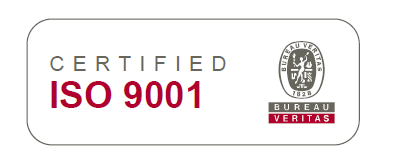Unique experience in all aspects of NVG lighting
Help with defining requirements
Drafting specifications
Understanding test requirements
All platforms
Consolite has worked with NVG lighting since the earliest days of its use. We have lived and breathed NVG lighting and have developed a unique level of expertise and understanding of the technology and its applications.
We recognise that it can be a hard subject to break into, and so we are very happy to share this knowledge with our customers. We help customers to define and understand their requirements, draft specifications, design in NVG lighting to their products, agree test requirements, and provide evidence of performance.
We do this across all platforms – air, sea and land.
Please contact us if you have a requirement.
Basics of NVG Lighting
Various categories of NVG lighting can be identified.
- NVG compatible lighting is the type used in aircraft cockpits and is intended to have negligible impact on NVG performance. Most compatible lighting is effectively invisible to NVGs but visibly bright enough to be seen unaided by aircrew.
- NVG friendly lighting is typically used for aircraft exterior lighting and certain warship lights. It is designed to be visible to NVG users at a certain distance, but not to have an adverse impact on NVG performance.
- NVG secure lighting is designed to minimise the signature to other NVG users, and is typically used in military vehicles and hand held equipment.
- Covert lighting is only visible through NVGs and invisible to the unaided viewer.
This document, Basics of NVG Lighting, provides a more detailed explanation of the technology behind NVG lighting and filtering.
Warship NVG Lighting
Consolite has a unique depth and breadth of experience in the field of NVG lighting for warships. Our work in this field goes back to the early years of this century when we upgraded a number of ships for the UK Royal Navy, including the aircraft carriers Ark Royal and Illustrious. Subsequent work in Spain, Netherlands and Australia has given us an unrivalled insight into the many issues around both upgrading warship lighting and designing and supplying lights for new build programmes.
That expertise was recognised by UK MOD when Consolite was asked to draft a new UK Defence Standard, Def Stan 02-587 Part 3, standardising requirements and performance parameters for NVG lighting on aviation capable warships and support vessels. That standard has now been adopted by other navies around the world.
Consolite also provides advice and design expertise to new build programmes, including the UK Queen Elizabeth Class aircraft carrier programme.
We have a separate web site dedicated to all aspects of our warship NVG lighting activities.
Cockpit NVG Lighting
When upgrading lighting in a legacy cockpit to NVG compatibility there are a number of key factors to consider.
The lighting after modification must appear balanced. That means there should be no very bright or very dim areas of panel back lighting. Where flood lighting is used they should be positioned so there is no shadowing in critical areas, and in sufficient numbers that again there is good uniformity.
Where lighting is dimmable all elements should dim uniformly and down to an low enough level. This is a particular issue when LEDs are used to replace filament lamps as the dimming characteristics are totally different unless special steps are taken.
Colours should be uniform across instruments. This applies particularly to panel back lighting and flood lighting. Although this is usually just specified as NVS Green A, that can cover a wide range of shades from a bluish green through to a more pure green. Efforts should be made to minimise colour differences across the instrument panels.
Consolite has long experience of NVG cockpit lighting upgrade design, implementation and test and is very well equipped to handle all the above issues.
Ground System NVG Secure Lighting
NVG lighting for military vehicles introduces another requirement – secure lighting. This means that the lighting on instrument panels and elsewhere is modified so as to minimize detectability by NVG equipped enemy forces, while at the same time providing a degree of compatibility with NVGs within the vehicle.
The latter could be older Gen II devices, and would usually not be equipped with the sharp cut filter used on aviators’ NVGs. This means that compatibility must be achieved not only by control of wavelength of emissions, but also by control of brightness, to a much greater extent than in an aircraft cockpit.
Secure lighting is defined by the US Army CECOM (Communications – Electronics Command) in a set of guidelines, as follows.
- Wavelength restriction. Total energy over specific wavelength bands is controlled to defined limits so as to minimise red and infra-red outputs while retaining enough visible output to be usable to the unaided eye.
- Luminance reduction. Light sources should be dimmed below a specific level for night use, but still provide full brightness in daylight.
- Viewing angle restriction. The viewing angle should be less than a specific angle so it is only visible to personnel directly in front of it.
Consolite can provide filters suitable for these requirements, and can test light sources for compliance with requirements in its dark room test facility.

